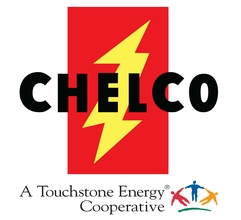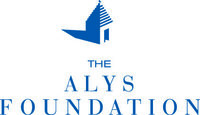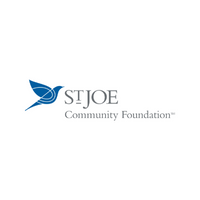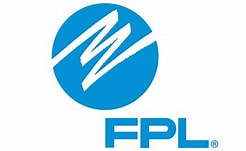PROJECT LIVING HISTORY

- School:
- Walton Intensity School of Excellence
- Subject:
- Low Performing Students
- Teacher:
- William Snell
- Rebecca Skalsky
- Students Impacted:
- 14
- Grade:
- 6-8
- Date:
- October 10, 2020
Investor
Thank you to the following investor for funding this grant.
The Alys Foundation - $403.77
Goal
What do I mean by saying that history is “counterintuitive”? The “intuitions” at stake here are the everyday ideas students bring to my history classroom. They are the ideas that students use to make sense of everyday life, they work very well for that purpose; but people performing living history programs are looking at things differently. Living history classrooms differ from textbooks classrooms through their use of performance and their responsible mode of historiography and history labs. Alternative living history models that incorporate "second-person interpretation," in which the students pretend to be part of the past, may be more effective in achieving learning and mastery of Florida Standards. My Project Living History explores how second-person interpretation can go beyond simply letting students try crafts or lessons. Students can make curatorial decisions about state standards that become visible to students creating more ownership of their own learning and determining their path when meeting history standards. Having my students take ownership of their own learning aligns with our current school improvement plan 2020-2021.
One half of our student population is struggling, many of them are living in impoverished situations. Additionally, Title I families lack the time and funds to send their children to visit cultural institutions that would enhance their child’s learning. Funding Project Living History guarantees all middle and high school students will experience cultural and historical values that aligned with the state standards. Cultural learning greatly contributes to the understanding of children’s place in the world. Essentially students will experience a broad range of culture and art forms, encouraging enjoyment, participation and creativity, (Response to Department for Digital, Culture, Media and Sport Review of Cultural Education 20 May 2011) breaking barriers to learning and human relationships, ultimately improving overall attendance, student achievement, and discipline.
The Wise Center consist of 75 students from 5th to 12th grade and 40% of the students have IEP/504s and 95% have FBA/BIP. The demographics include: 61.3% White, 17.2% Hispanic or Latino, 14% African Americans, 6.5% Multi-racial, and 1% Asian. . The trends discussed in the article Parent Involvement in Schools (Child Trends 2014) reflect the same aspects and challenges that The Wise Center faces: low-income families, difference by grades (lower grade levels have higher parent count during parent night). What’s the most accurate predictor of academic achievement? It’s not socioeconomic status, nor how prestigious the school is that their child attends. The best predictor of student success is the extent to which families encourage learning at home and involve themselves in their child’s education. I want to increase the geographical and cultural literacy of students as well as expanding the love of history in their culture. The Wise Center and Walton "In”10”sity School of Excellence" will strengthened home-school-community partnerships; students will increased their skills and talents through enriched curricular and extracurricular experiences; and parents will share experiences and connections with other families creating feelings of support that empowers parents’ voices in school decisions.
What will be done with my students
All my students will complete a research report complete with a writing rubric. The holistic score will determine their level of proficiency from below basic-basic, and proficient –advanced. The writing application and strategies measure all areas of FSA writing ideas and content, organization, voice, word and language choice, sentence fluency, and conventions. The holistic score will determine their level of proficiency from below basic-basic, and proficient –advanced. The writing application and strategies measure all areas of FSA writing ideas and content, organization, voice, word and language choice, sentence fluency, and conventions. Although the Standards are divided into Reading, Writing, Speaking and Listening, and Language strands for conceptual clarity, the processes of communication are closely connected, as reflected throughout this grant. For example, writing standard 9 requires that students be able to write about what they read. Likewise, Speaking and Listening standard 4 sets the expectation that students will share findings from their research. All my students will complete a Project Base Learning Assessment with a rubric. Their final project, to prove mastery of the Florida Standards of History, my students will perform an Living History event at the Florida Chautauqua Assembly Festival in Defuniak Spring, Florida.
Benefits to my students
The benefits of student completing PBL activities are:
1. Collaboration: Relationships formed during collaboration is a huge part of PBL. Not only do students learn how to work better in groups—providing their own input, listening to others, and resolving conflicts when they arise—they build positive relationships with teachers, which reinforces how great learning is. Students also form relationships with community members when working on projects, gaining insight for careers and beyond.
2. Problem Solving: Students learn how to solve problems that are important to them, including real community issues, more effectively—even learning from failure and possibly starting over.
3. Creativity: Students apply creative thinking skills to innovate new product designs and possibilities for projects.
4. In-Depth Understanding: Students build on their research skills and deepen their learning of applied content beyond facts or memorization.
5. Self-Confidence: Students find their voice and learn to take pride in their work, boosting their agency and purpose.
6. Critical Thinking: Students learn to look at problems with a critical thinking lens, asking questions and coming up with possible solutions for their project.
7. Perseverance: In working on a project, students learn to manage obstacles more effectively, often learning from failure and possibly starting over from scratch.
8. Project Management: Students learn how to manage projects and assignments more efficiently.
9. Curiosity: Students get to explore their curiosities, ask questions and form a new love for learning.
10.Empowerment: Students take ownership over their projects, reflecting on and celebrating their progress and accomplishments.
Cultural learning greatly contributes to the understanding of children’s place in the world. Essentially students will experience a broad range of culture and art forms, encouraging enjoyment, participation and creativity, breaking barriers to learning and human relationships, ultimately improving overall attendance, student achievement, and discipline.
Project Living History transforms classrooms into museum exhibits, bringing life to classroom teaching and interaction through questioning for establishing rigor in the classroom. The springboard is the Social Studies curriculum having the potential to transform the whole school as it exhibits individual Inquiry research and collaborative interdisciplinary projects in all subject areas such as: art, drama, music, science, math, media and technology, reading & Language Arts. This approach does not simply educate in a moralistic, linear way, but lends its approach to include cultural education in the context of learning for all ages. Project Living History incorporates a multiplicity of formats and techniques within its context. Students will increase their research skills, thereby improving overall reading achievement and content knowledge as measured by grades in Social Studies and annual FSA scores.
Measurement:
The 8th grade students will take the Florida EOC assessments that measures the student’s achievement of Florida's standards as outlined in course descriptions. The standards and course descriptions specify the expectations for student learning in Florida and provide the basis for the content that will be measured on each Florida EOC assessment. The U.S. History EOC Assessment measures achievement of Florida students enrolled in U.S. History, specifically American History (2100310) or American History Honors (2100320), or an equivalent course, by assessing student progress on benchmarks from the NGSSS that are assigned to U.S. History course descriptions.
The 7th grade students will take the Civics EOC Assessment that measures achievement of Florida students enrolled in any of six different Civics courses, specifically M/J Civics-year (2106010), M/J Civics (2106015), M/J Civics & Career Planning (2106016), M/J Civics, Advanced (2106020), M/J Civics, Advanced (2106025), M/J Civics, Advanced (2106026), M/J Civics and Digital Technologies (2106029), or an equivalent course, by assessing student progress on benchmarks from the NGSSS that are assigned to Civics course descriptions.
The 6th grade students will be pretested in Social Studies in September and post tested in May. The results will enhance quarterly 6th grade Benchmark testing and contribute to what every 6th grader should know. Overall student achievement will improve with active participation in the project. When students choose their own inquiry and thesis, they become more engaged in their own learning. Student attendance, attitude, and confidence will increase. Teachers should record this data throughout the project and compare with another teacher’s involved in the project.
My students will be ready for college, workforce training, and life in a technological society, students need the ability to gather, comprehend, evaluate, synthesize, and report on information and ideas, to conduct original research in order to answer questions or solve problems, and to analyze and create a high volume and extensive range of print and nonprint texts in media forms old and new. The need to conduct research and to produce and consume media is embedded into every aspect of today’s curriculum. With the funding of this grant, my students will meet the needs of college, life after school, and become life-long learners.
Budget Narrative
The expensive of $403.77 will be used to meet the goals of: that engage students will become a life-long learner continuing to benefit from internal maturity and external influences; engage students will understand the workings of government and use historic precedents in shaping
thought and action; and lastly, civil discourse and thoughtful deliberation are necessary to promote the common good and protect all individuals.
Items
| # | Item | Cost |
|---|---|---|
| 1 | California Costumes Prairie Girl Child Costume | $36.99 |
| 2 | California Costumes Paul Revere Boy Costume, One Color, Large | $38.99 |
| 3 | California Costumes Men's Frederick Douglas | $18.99 |
| 4 | WW2 Soldier Costume | $70.99 |
| 5 | Theodore Roosevelt Costume | $28.49 |
| 6 | Charades Child's Colonial Girl Costume Dress | $9.86 |
| 7 | California Costume Girl's American Suffragette | $40.53 |
| 8 | California Costume Rosie the Riveter Costume | $24.99 |
| 9 | California Costumes Colonial Lady/Betsy Ross/Martha Washington | $22.42 |
| 10 | California Costume Pioneer Boy Costume | $40.53 |
| 11 | Women's Victorian Rococo Dress Civil War Ball Gown | $70.99 |
| Total: | $403.77 |






Share
Please share this page to help in fulfilling this grant.
Email to a Friend